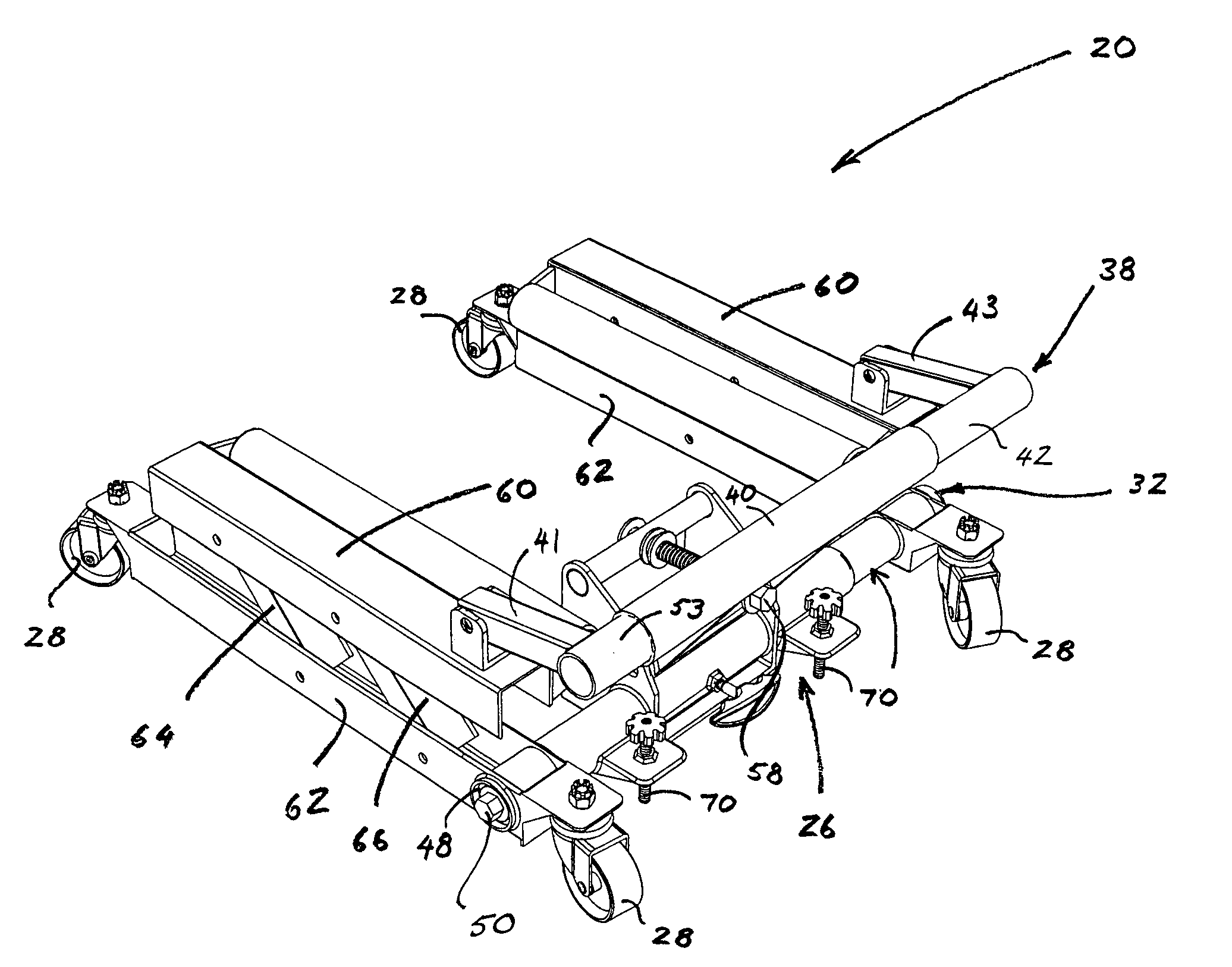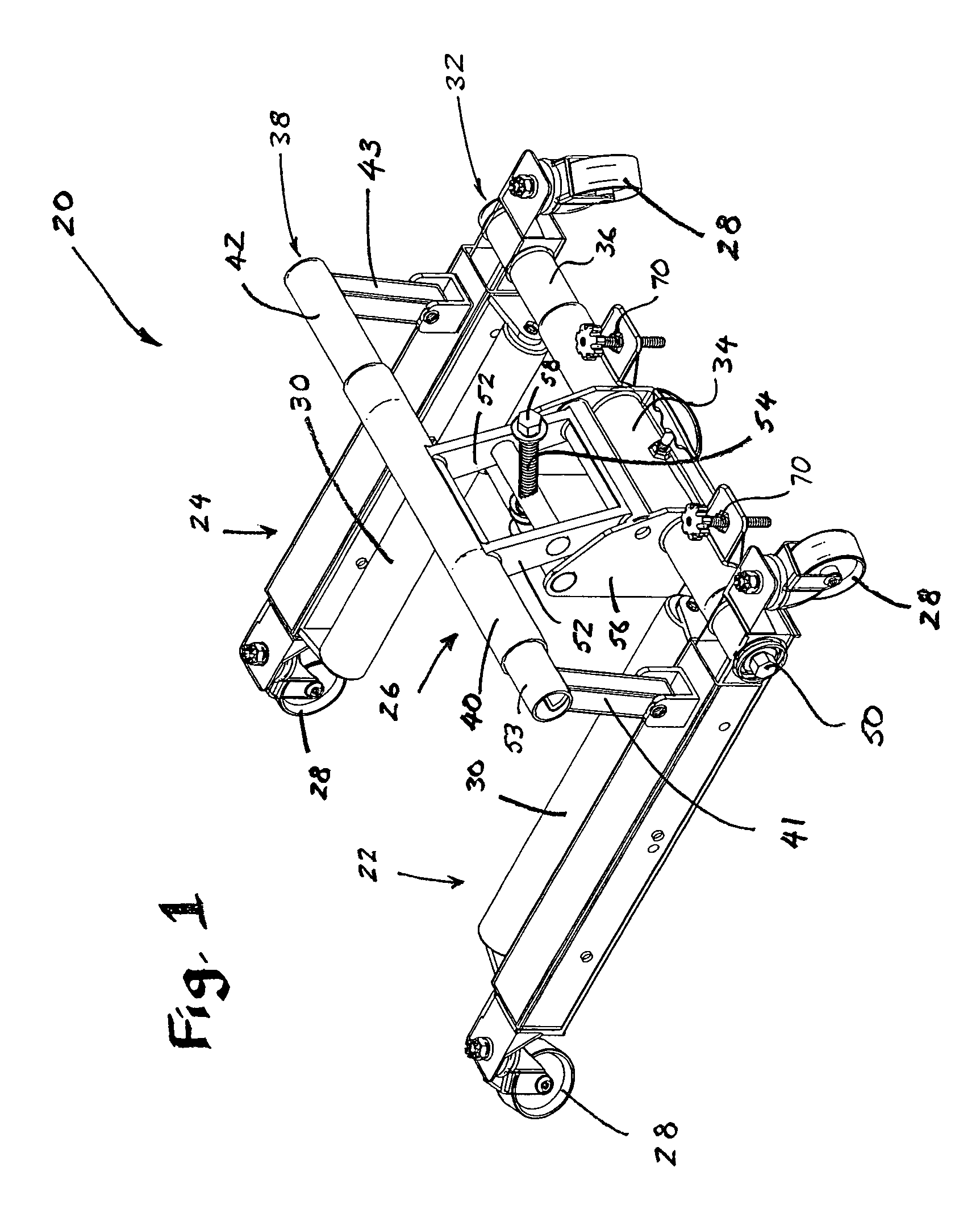Automobile jack and wheel dolly
a technology of jack and dolly, which is applied in the field of mechanical devices, can solve the problems of inconvenient use, inconvenient use, and inability to adjust and achieve the effect of convenient adjustment of the length of the base arm
- Summary
- Abstract
- Description
- Claims
- Application Information
AI Technical Summary
Benefits of technology
Problems solved by technology
Method used
Image
Examples
Embodiment Construction
[0026]With reference to the drawings, which are provided by way of exemplification and not limitation, there is disclosed a wheel dolly suitable for using both as an automobile jack for holding heavy loads aloft for extended periods and to manipulate wheels, having features of the present invention.
[0027]In a preferred embodiment of the present invention, a wheel dolly, generally characterized by the numeral 20, is formed into a U-shape (when viewed from above as in FIG. 4 and FIG. 8) by two parallel support arms, left arm 22 and right arm 24. The base of the U-shape is closed by a base arm 26 (FIG. 4 and FIG. 8), connected to ends of the parallel support arms 22, 24. At each corner of the dolly 20 a caster 28 may be fixed, allowing the dolly to be easily moved about a horizontal floor surface, including when carrying a load. Each parallel arm 22, 24 includes a cylindrical roller 30, pinned by the ends of the roller to points of support on the support arm. The rollers 30 are configu...
PUM
 Login to View More
Login to View More Abstract
Description
Claims
Application Information
 Login to View More
Login to View More - R&D
- Intellectual Property
- Life Sciences
- Materials
- Tech Scout
- Unparalleled Data Quality
- Higher Quality Content
- 60% Fewer Hallucinations
Browse by: Latest US Patents, China's latest patents, Technical Efficacy Thesaurus, Application Domain, Technology Topic, Popular Technical Reports.
© 2025 PatSnap. All rights reserved.Legal|Privacy policy|Modern Slavery Act Transparency Statement|Sitemap|About US| Contact US: help@patsnap.com



